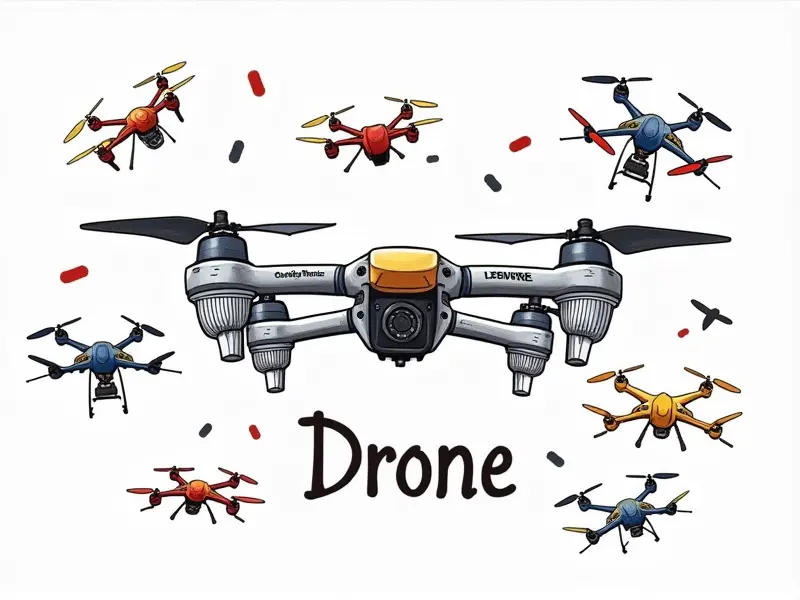What is VTX power in FPV?

VTX power (Video Transmitter Power) plays a critical role in the performance of First-Person View (FPV) drones, significantly impacting both video quality and signal range. Understanding how to optimize your VTX power settings can greatly enhance your overall FPV experience.
Understanding VTX Power for FPV Drones
The VTX is a crucial component in an FPV drone system that transmits the live camera feed from the drone to a ground-based receiver. The power level of this transmitter directly influences several aspects of your flight, including image clarity and transmission distance.
Boost Your FPV Signal with Optimal VTX Power
To maximize the signal strength between your drone and your goggles or video monitor, it's essential to set the correct VTX power level. A higher power setting will generally provide a stronger signal, but there are trade-offs such as reduced battery life and increased interference.
Maximizing Your VTX Power for FPV
The key to maximizing your VTX power lies in finding the right balance between range and efficiency. Start by testing different settings in controlled environments before venturing out into more challenging conditions.
How VTX Power Affects FPV Video Quality
The quality of the video transmitted from your drone can vary based on the power output of your VTX. Higher power levels often result in clearer images, but they may also introduce noise and distortion if not properly managed.
Choosing the Right VTX Power Level
Selecting an appropriate VTX power level depends on various factors such as distance from the drone to the receiver, environmental conditions, and the specific requirements of your FPV setup. Experimentation is key to finding what works best for you.
VTX Power Explained: Tips for Beginners
Newcomers to FPV may find it daunting to navigate through the complexities of VTX power settings. Here are some basic tips:
- Start with moderate power levels: Avoid setting your VTX at maximum power right away, as this can lead to overheating and reduced battery life.
- Test in different environments: Understand how varying conditions affect signal strength and video quality.
- Leverage antenna diversity: Using directional antennas alongside omnidirectional ones can provide better coverage and clarity.
VTX Power Settings for Ultimate FPV Performance
To achieve the best possible performance from your FPV system, consider these advanced strategies:
- Dynamic power adjustment: Adjust VTX power on-the-fly based on real-time conditions.
- Bandwidth optimization: Fine-tune channel settings and bandwidth to minimize interference and maximize clarity.
- Utilize high-gain antennas: High gain antennas can extend your range significantly, allowing for clearer signals over longer distances.
Common Mistakes with VTX Power Settings
Mismanaging VTX power settings is a common pitfall among FPV enthusiasts. Here are some errors to avoid:
- Setting too high: Overpowering your VTX can lead to excessive battery drain and interference.
- Neglecting environmental factors: Conditions such as terrain, buildings, and other electronic devices can severely impact signal quality.
- Failing to test in real-world scenarios: Relying solely on simulations or indoor testing won't accurately reflect how your setup will perform outdoors.
What Does VTX Power Mean in FPV?
In essence, VTX power refers to the amount of energy that a video transmitter outputs when transmitting an image from an FPV drone. This parameter is crucial as it directly affects the reliability and quality of the transmitted signal.
The Impact of VTX Power on FPV
Higher VTX power levels provide better range and clarity but come at the cost of increased energy consumption. Conversely, lower power settings are more efficient but may not deliver optimal performance in all situations.
Optimizing VTX for Clear FPV Video
To ensure your FPV videos remain sharp and clear even over long distances:
- Choose the right VTX model: Select a transmitter that offers adjustable power levels and supports different video formats.
- Tune for specific frequencies: Fine-tuning your VTX to operate on less crowded bands can significantly improve signal quality.
- Monitor temperature and voltage: Keep an eye on these metrics to avoid overheating or excessive battery drain.
Conclusion
Mastery of VTX power settings is vital for achieving top-notch performance in FPV drone operations. By carefully balancing output strength with practical considerations, you can enjoy crisp visuals and reliable signals across a wide range of flying conditions. Experimentation and continuous learning will help refine your setup to perfection.

